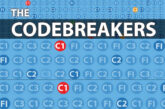
Need help with cracking those EICR codes? The technical team at NAPIT, with the help of the 18th Edition Codebreakers publication, answer your latest coding queries. Click on the photos for a closer look!
STEVE BRENNAN: OVER RECENT MONTHS I’M FINDING MORE AND MORE ‘BANJOS’ BEING EARTHED USING SELF-TAPPERS. I WAS WONDERING IF THIS IS ACCEPTABLE OR IS THERE A PROHIBITIVE REGULATION?
We often consider it wrong when we see something we aren’t used to seeing. Sometimes it is, sometimes it isn’t, and sometimes it’s a subjective take on a new practice. This could well be one of those occasions…
The BS 7671 take on this is that connections should be of sound mechanical strength and electrical conductance; Regulation 134.1.4. is the one to look at. The use of nut and bolt fixings on SWA earthing tabs, or ‘banjos’, has long been the go-to method. That said, the type of self-taper used in metal enclosures probably wasn’t around or too prevalent when SWA cables were first used.
This doesn’t make them unusable, but there are some questions you need to ask yourself:
1. Does it afford the same mechanical and conductance properties?
2. Does it present a damage risk to other cables?
3. Is it really any less effective?
4. What does the SWA gland manufacturer say?
The first one can be checked by measuring for continuity and possibly an IR test. After that, if we look at the possible damage to other circuits, the cable is distanced quite well from the self-tapper, and to be completely fair, there are just as many sharp edges on some nut and bolt screw threads, so I don’t see that as an issue in this case. Additionally, we can see that the enclosure manufacturer has used something similar to fix the top access panel in place.
Something to consider also is that the self-tapper will dig into the bare metal of the enclosure and may have more effective contact and continuity properties, as opposed to the nut and bolt, although both should have some of the enclosure paint removed to ensure good electrical contact.
After all of those things are looked at, we need to see what the SWA gland manufacturer says. This can be tricky as there are many, and pinpointing the actual one could prove fruitless.
For me, this is an inspector’s engineering judgement call as to whether this is coded at all, and if it is, it may only be a C3 rising to something more if there is visible damage to a cable, which there doesn’t seem to be here. So, in this case, I wouldn’t code this at all, but I may note on the observations that it should be monitored at its next EICR to confirm that the contact surface is adequate.
Order your copy of NAPIT Codebreakers here








